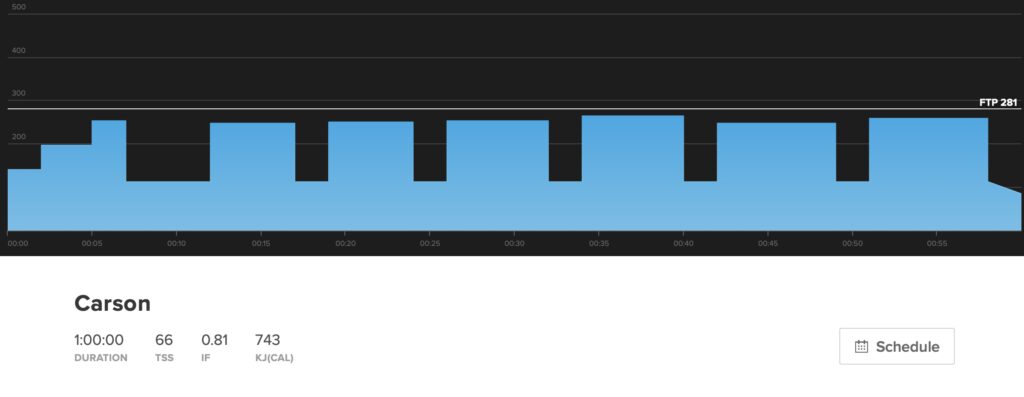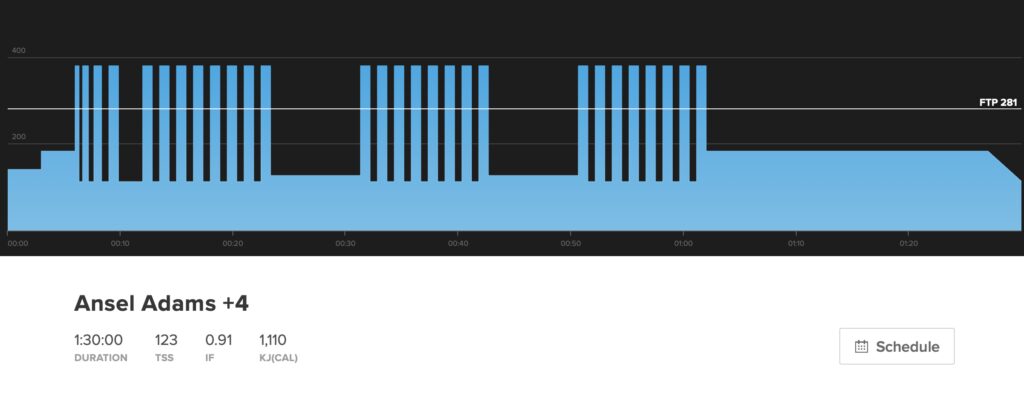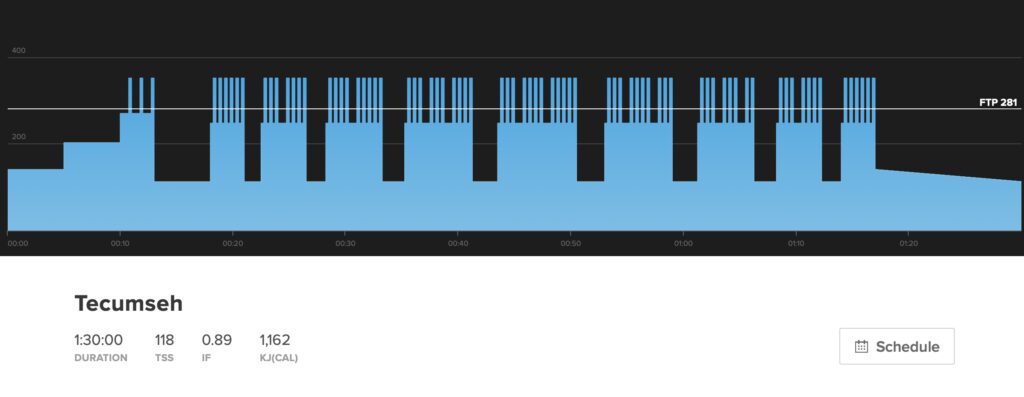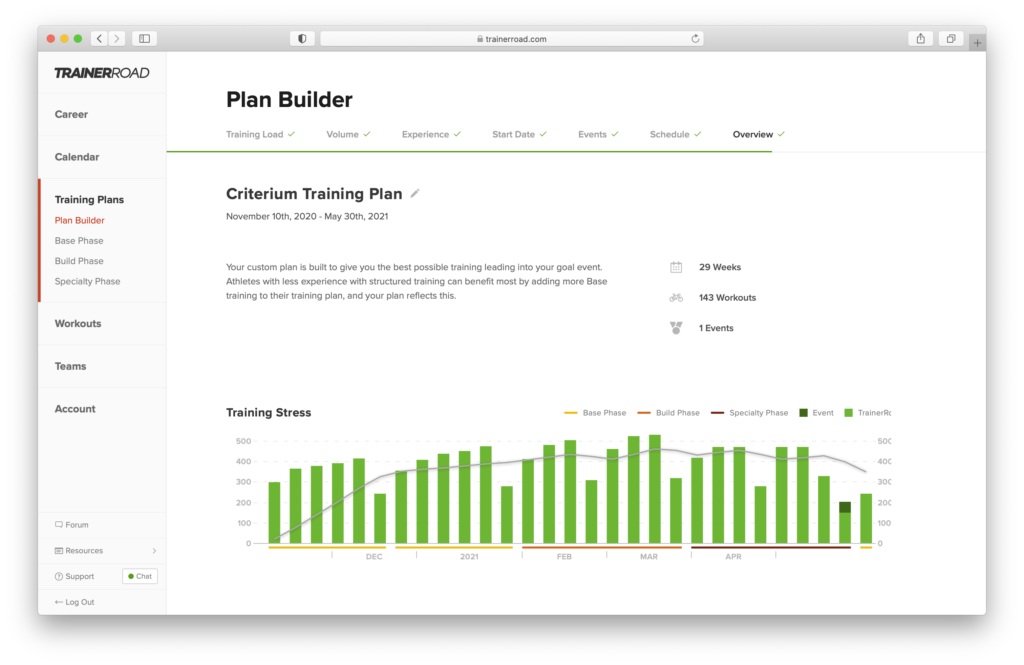Criterium Racing
Criterium racing is a wildly exciting form of road racing. But what is a criterium, and what is the best way to train for one? In this article, we’ll cover the ins and outs of crits and how you can be successful as a criterium racer.
What is a Criterium?
Criteriums, also known as crits, are cycling races that require a blend of fitness and strategy. Racing laps on a closed circuit, criteriums courses are typically about a mile long and feature two to six turns while avoiding any significant climbs. These races are known for their intensity, high speed, and unpredictable finishes. For beginners, crits last about thirty-minutes, while pro races can last well over an hour. Groups of cyclists are divided by racing category.
Adaptive Training
Get the right workout, every time with training that adapts to you.
Check Out TrainerRoadPerhaps the most exciting aspect of criterium racing is that the strongest racer doesn’t always win. Not only are crit racers required to attain a high level of physical conditioning, but they also have to make snap decisions and strategize while fighting their way through unceasing fatigue.
Criterium Training
Training for a criterium is very similar to other forms of racing. Through a progressive and periodized training plan, you’ll build an aerobic base, then refine your fitness specifically for the power demands of crit racing.
What Type of Fitness Do You Need to Race a Crit?
Criteriums can be wildly diverse in terms of course characteristics & racing conditions, which can have a major impact on how a race unfolds and what type of rider excels. Race tactics & strategy aside, the physical demands of high-intensity criterium racing, lasting 30-90 minutes, have a wide range. You want the ability to explosively produce power and sustain efforts above FTP, all with little opportunity for adequate recovery.
While you will extensively use your anaerobic energy system during the race, you’ll need strong aerobic fitness. A well-developed aerobic energy system will help you repeatedly output power near your VO2 Max and metabolize the byproducts of those anaerobic efforts. Additionally, you’ll want plenty of muscular endurance and the ability to sprint with nearly-exhausted muscles.
What Should a Crit Training Plan Include?
There are several things that a criterium training plan should include. Often neglected but vitally important is a dedicated block of Base Phase training. Aerobic fitness is a common limiter for racers in all disciplines, including crit racing. Even though the critical moments of a criterium occur at high intensities, riders that have greater aerobic fitness will be fresher with less fatigue.
Once your aerobic base fitness has been addressed, a crit training plan should shift the focus to emphasize power at VO2 Max. This will help develop sustainable power while progressing to short efforts with high power. This increased attention will improve your ability to operate at high percentages of your VO2max power and your ability to push big watts for very short durations, repeatedly, with minimal recovery time.
Finally, the last part of your crit training plan should include race-specific work in a Speciality Phase. You will want workouts that grow increasingly crit-like in their demands by furthering your ability to generate high watts for short periods of time, over & over, with little recovery. Your crit training plan will also reduce the overall training volume as you near your goal event. That way, you can be fresh and ready to go on race day.
Example Crit Workouts

Carson is a workout that aims to increase muscular endurance via Sweet Spot efforts by expanding your base for more intense workouts later on.

Ansel Adams +4 is a workout that is focused on increasing maximum aerobic capacity.

Tecumseh is a race simulation workout that prepares you for the demands of the attacking nature of criterium racing.
How TrainerRoad Will Make You a Faster Crit Racer
Each of TrainerRoad’s criterium training plans includes everything you need to be a faster crit racer. You can build a custom crit training plan with Plan Builder. Plan Builder will consider your experience, available training time, and goal event to create the perfect crit training plan.

Every TrainerRoad training plan includes three distinct training phases that build your fitness progressively. You’ll start with Sweet Spot Base to build your aerobic base, then work on power at VO2 Max with Short Power Build. Finally, you’ll sharpen your race-specific fitness with the Criterium Specialty. With workouts that build sprint power and emphasize anaerobic power and aerobic capacity, you’ll be ready to crush your criteriums.
Skills and Bike Handling Training
Besides building your fitness, successful criterium racing will also hinge on your bike handling skills—especially cornering. When cornering in a group, the riders ahead of you are frequently going to dictate where you go, and to a lesser extent, the speed you’ll carry through the turn. However, the smoother your turn, and the more speed you can carry out of your turn, the less energy you’ll spend. So it is essential to practice cornering.
In addition to working on cornering, fighting for position consumes energy, but it’s worth it in a criterium. Be willing to use your energy to hold the wheel instead of conserving it for the sprint. An efficient technique is to anticipate the accelerations and movements of the rider you are following. This will minimize the gaps ahead of you and stop others from taking your position. The best way to practice this is by riding in a tightly packed group.
Criterium Racing Tactics
Criterium racing is all about rapid strategic decisions. Riders with less fitness but armed with sound strategy frequently have great success. Developing your racecraft takes time and will come with experience.
Beginner Crit Tactics
Smart positioning is more important than being the strongest rider in a criterium. Be assertive but not aggressive. Anything you do should aim to maintain your position, not move another rider. If needed to keep yourself upright, lean into another rider rather than push them. You can’t use your hand to move a rider, so keep your hands on the bars. As long as your handlebars are in front of another riders’, you control the line.
Because the size of a field can vary by so much, it’s important to know how to implement appropriate tactics, whatever the size. There are essentially two ways that the criterium will play out—a group sprint or breakaway. Small fields are more likely to be composed of individuals and less likely to have teammates working together to protect a single rider. Taking a calculated risk and using the element of surprise can serve to your advantage and might even result in a winning move.
In larger fields, taking the wrong line, cornering slowly, or sitting towards the back of the field costs more energy because larger fields have higher speeds. Every mistake you make forces you to accelerate to keep up. Having to surge repeatedly is a waste of power and energy. Attacking a large field in a crit race is difficult for beginners, but if it fails, you’ll have more opportunity for recovery because there are more riders to do the work.
More than anything, safety is paramount. You can’t win a criterium if you hit the tarmac. Beginner crits are often marred with a bounty of crashes. So hold a predictable line, ride smoothly, and communicate to the other riders around you.
Advanced Crit Racing Tactics
Attacking
Anybody can attack, but making an attack stick is a different task altogether. Establishing a breakaway is hard work. A common mistake is losing the main objective of an attack—get away and stay away. Many times, crit racers will prematurely judge an attack’s effectiveness, rapidly shutting down the attack. The result is numerous ineffective but maximally draining attacks. Instead, a better idea is to fully commit to one quality attack that will likely deliver greater success. A quality attack begins by building speed while the group is slowing.
You can do this by dropping to the back of the decisive group after an attack, then swinging wide through corners to allow maximum momentum. This will enable you to build enough speed to create a gap from the front of the group that most racers aren’t willing to work hard enough to latch onto your wheel. The most important part of an attack comes after the initial move. Rather than immediately looking back and choosing whether to stop attacking or not, stay focused on the effort and double down to establish the gap.
Once a significant gap has been established, reassess the situation. If there are other riders that you consider a threat, start letting them fill in gaps in the rotation or strategically upset the group’s rhythm to make those riders work harder. If you notice the pack working together and successfully catching up, continue conservatively, but keep the pressure high. The chaser may lose energy or interest.
Patrolling
Patrolling a criterium is often misunderstood as a passive approach to bike racing. This involves riding at the front of the race and reacting to the decisive moves. Properly patrolling a crit race comes with a massive energy cost. Strong fitness, deep experience, and knowledge of your competition is a must. The fitness needed for this strategy focuses on repeatability, with attacks and reactions going briefly into anaerobic territory. In contrast, the time in between attacks and responses is often spent just below threshold.
Patrolling requires you to be confident in your ability to ride at the front of the pack for the race duration but not giving the group a free ride. Instead, you are waiting in the best position possible to react to the decisive move. An extra perk of patrolling at the front is that it allows you to influence the race’s pace at times. However, this usually means you are sacrificing some of the drafting benefits you get from sitting deeper in the pack.
TrainerRoad Race Analysis Videos
One of the best ways to study crit racing strategy is by watching our Race Analysis YouTube playlist. There you can get tips from the pros on everything you need to know about racing.
Your success in a breakaway has more to do with being smart and efficient than brute strength or power. Smart racers make it into breakaways, and the smartest ones find a way to win from that break.
Picking the right wheel to follow is essential when the criterium comes down to a sprint finish. But the best plans don’t always work out. These pro tips can help you find the right wheel in a sprint and make adjustments when things don’t go as planned.
Moving through a large crit field in a mass start event can be stressful. These pro tips will help you get to the front of the field efficiently so you can put the power down at the finish line.
5 Tips for a Successful Race
- Find a race video or use Google Earth to preview the race course well in advance and note any course features.
- Give yourself time to warm-up before your race. How you respond to a warm-up is highly individual, so experiment leading up to the race.
- Eat a carb-centric pre-race meal 3-4 hours before the race to make sure you have the fuel onboard and plan nutrition based on the length of your race.
- Relax, and don’t panic. The first part of the criterium will be challenging, but it will settle down, then ramp up for the finish.
- Stay safe by making predictable and moves in the group.
